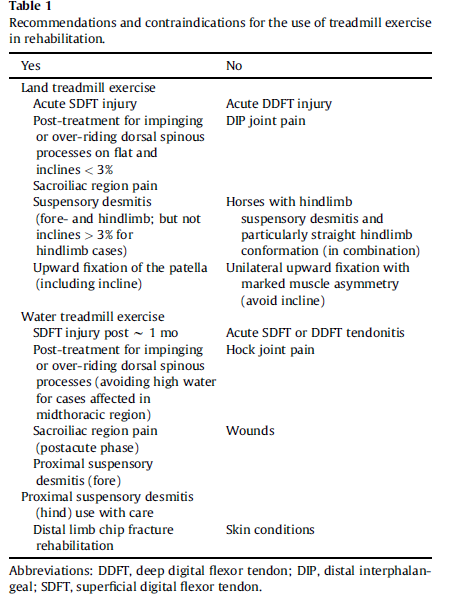
Water and land treadmills for rehabilitation and performance
The main advantage of treadmill exercise is the possibility to standardise training duration, physical loading and surface; the ability to train the horse without a rider; and to train specific muscle groups by varying the incline/decline or water depth. Evidentially, this training tool is not only popular in research and rehabilitation centres, but also in private competition yards. Nevertheless, a rationale for its use, devised on a case-by-case basis, will always be necessary, with regular monitoring of the gait pattern throughout rehabilitation.
Guidelines for the related exercise parameters, such as speed, intensity, duration and inclination, are already presented in previous research. This study fills the gap in the understanding of the uses and contraindications of this training and rehabilitation tool. It collected evidence pertaining to the physiology and biomechanics of land and water treadmill exercise in horses by examination, experts’ opinions and by reviewing the current literature on this topic.
It is concluded that the statements on the benefits and/or contraindications for treadmill exercise, which are shown in the table below, should be followed thoroughly and by preference regularly monitored by a suitably qualified therapist and/ or veterinarian. These statements differ for the land and water treadmill as their effect on back and limb kinematics aren’t comparable. Furthermore, the actual management of the horse during and in advance of the treadmill use should be handled consciously to gain maximal profit of it.
Expert opinion by Isabeau Deckers
As the popularity of treadmills for physical management of our equine athletes is growing, it is important to understand when and why we use them. Successful rehabilitation and training depend on avoidance of unsuitable exercise as much as selection of beneficial exercises. Therefore, a coordinated exercise and treatment program, devised on a case-by-case basis, will always be necessary, with regular monitoring by an experienced and suitably qualified therapist/veterinarian. This study will help equine professionals to choose for the right type of treadmill for the right indication. (See table below.)
> From: Nankervis, J Equine Vet Sci 53 (2017) 108–115. All rights reserved to Elsevier Inc. Click here for the online summary.


